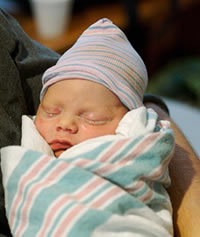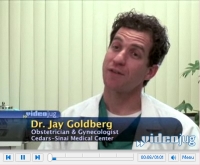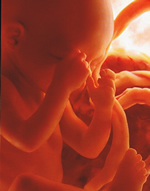Labor Stages: Delivering The Placenta, Final Results
 Almost immediately after you have finished giving birth to your new bundle of joy your uterus will start to retract and the first few contractions will dislodge the placenta. This usually only takes one push to expel the uterus and in most cases you won’t even feel it and is usually over in less than 10 minutes.
If you’re planning to breastfeed, you can even start right now. In fact the earlier you start the better. If you are not managing to successfully breastfeed right away don’t worry, not all babies are eager to nurse in the first few minutes after birth. Most babies will eventually begin to nurse within the first hour or so after birth if given the chance. Early nursing is good for your baby and can be deeply satisfying for you. What’s more, nursing triggers your body to release oxytocin, the same hormone that causes contractions, and helps your uterus stay well contracted.
As your focus has now shifted to your new born you probably wont even notice the contractions you are having, even though they are really quite mild now anyway. Your healthcare provider will examine the placenta in order to ensure that it has all come out. He/She will give you a thorough once over to make sure that everything is alright, and if you need any stitches these will be administered now.
If you had an epidural, an anesthesiologist or nurse anesthetist will come by and remove the catheter from your back. Unless your baby needs special care, be sure to insist on some quiet time together and enjoy your first few moments alone together, you have earned it.
Now that your baby has been born, the medical staff will now perform the apgar tests on your baby to make sure everything is O.K.
Almost immediately after you have finished giving birth to your new bundle of joy your uterus will start to retract and the first few contractions will dislodge the placenta. This usually only takes one push to expel the uterus and in most cases you won’t even feel it and is usually over in less than 10 minutes.
If you’re planning to breastfeed, you can even start right now. In fact the earlier you start the better. If you are not managing to successfully breastfeed right away don’t worry, not all babies are eager to nurse in the first few minutes after birth. Most babies will eventually begin to nurse within the first hour or so after birth if given the chance. Early nursing is good for your baby and can be deeply satisfying for you. What’s more, nursing triggers your body to release oxytocin, the same hormone that causes contractions, and helps your uterus stay well contracted.
As your focus has now shifted to your new born you probably wont even notice the contractions you are having, even though they are really quite mild now anyway. Your healthcare provider will examine the placenta in order to ensure that it has all come out. He/She will give you a thorough once over to make sure that everything is alright, and if you need any stitches these will be administered now.
If you had an epidural, an anesthesiologist or nurse anesthetist will come by and remove the catheter from your back. Unless your baby needs special care, be sure to insist on some quiet time together and enjoy your first few moments alone together, you have earned it.
Now that your baby has been born, the medical staff will now perform the apgar tests on your baby to make sure everything is O.K.
 Related Video
In our pregnancy video section we have a whole range of videos for you to watch which cover a whole range of subjects, from general pregnancy, complications, newborn care and even beauty.
We have a video which related to post labor – so be sure to check it out in the video section here
Related Video
In our pregnancy video section we have a whole range of videos for you to watch which cover a whole range of subjects, from general pregnancy, complications, newborn care and even beauty.
We have a video which related to post labor – so be sure to check it out in the video section hereStages of Labor Part 3


